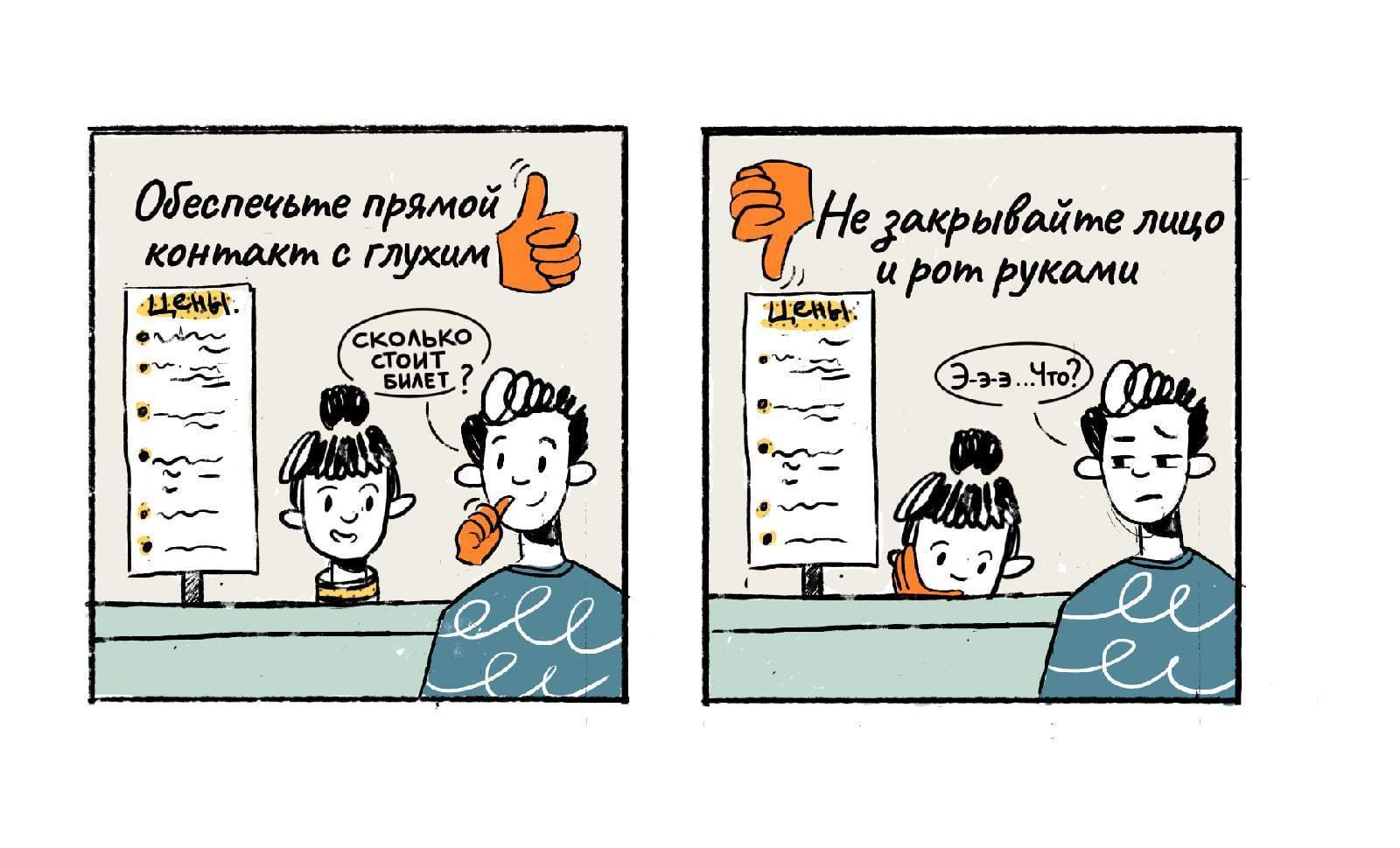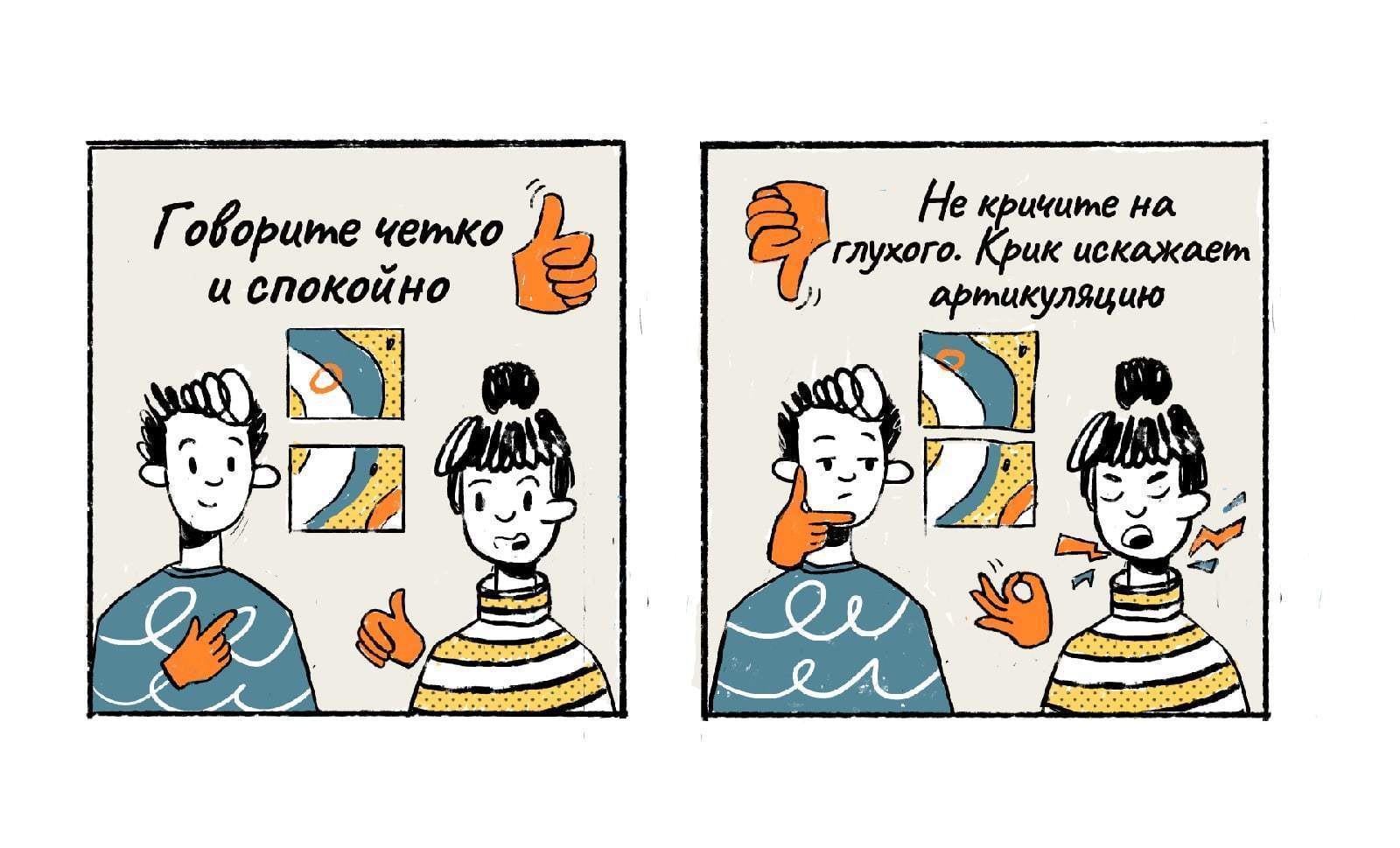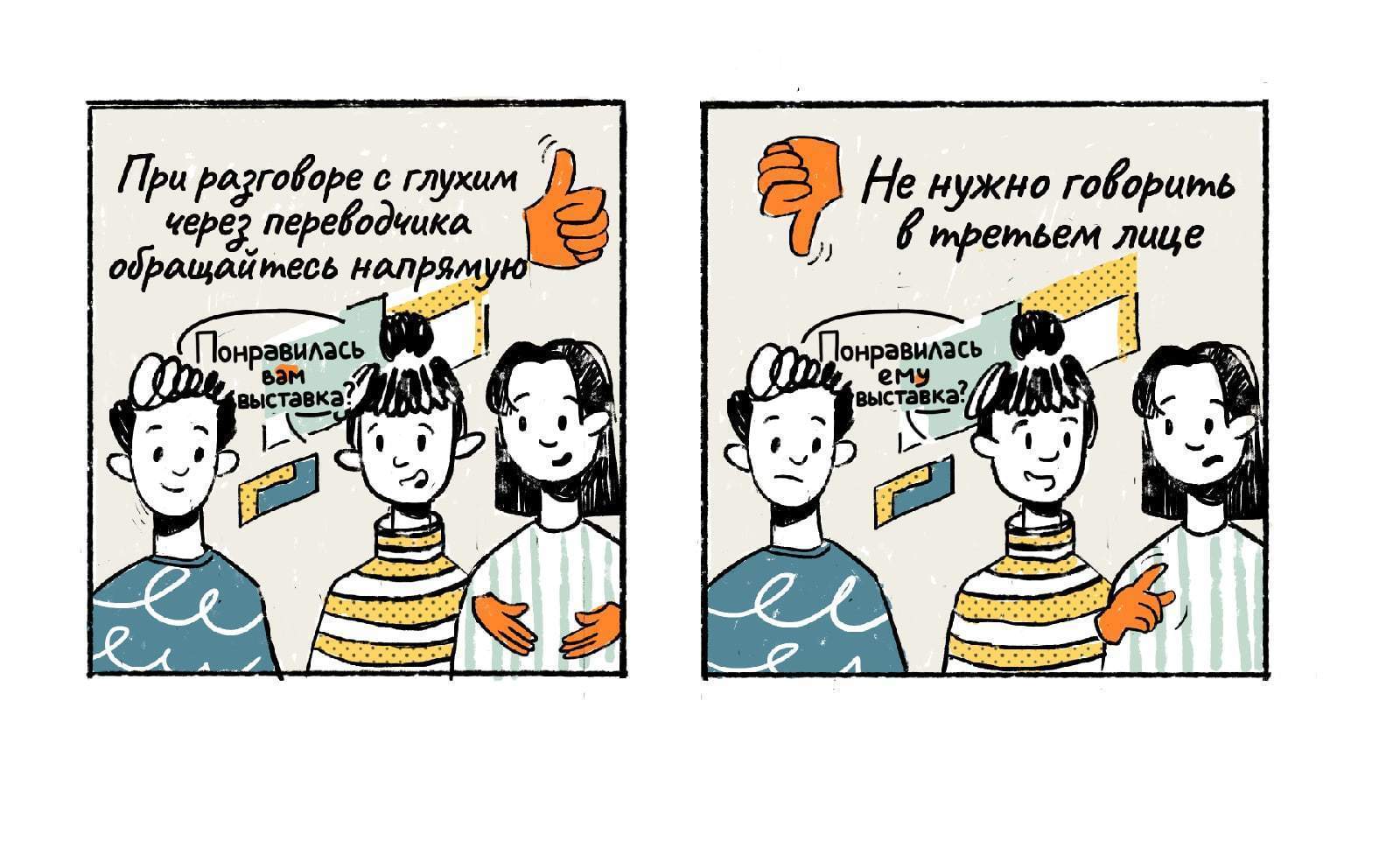Tips for working with deaf visitors
Lyudmila Luchkova, Manager at Garage Inclusive Programs Department
Garage is launching a comic for museum staff that will explain some key things about communicating with deaf and hard of hearing visitors.
There are eight simple instructions:
- Take into account the audio-visual information perception model used by deaf and hard of hearing people when you deliver tours, talks, and other events.

- If you need to attract the attention of a deaf visitor, slightly touch their forearm with your hand. Do not grab or walk around them, etc.

- Make sure there is a direct visual contact established: your face should be turned to the deaf interlocutor providing eye-to-eye contact with them. Do not cover your face and mouth with your hands during the conversation: otherwise the deaf person will not be able to see your lips’ articulation. Your face has to be well lit, as some deaf people can lip-read.

- Speak in a calm and clear manner, using short, simple constructions. You should not scream or raise your voice throughout the dialogue: loud speech distorts articulation and can also make you face look angry, which will prevent the deaf person from understanding you correctly.

- If you see that the deaf person does not understand you, explain what you mean in written form. But remember, that some deaf people may experience difficulties with communication via written texts.

- If you need to walk through a group of deaf people who are talking to each other using sign language, do not “crawl” in between them or bend down trying to “sneak through” unnoticed: it is better to simply walk through quickly.

- If you communicate with the help of a sign language interpreter, address the deaf person directly. At the same time, be prepared that the deaf person will not necessarily look at you alone all the time—they may also glance at the interpreter here and there.

- If a hard of hearing person has not heard exactly what you said, do not repeat using easier to comprehend phrases. Repeat what you said in a slightly louder and clearer manner. If they still do not understand, use simpler constructions.

Illustrated by @Archideti, an environment for kids and teens.
We help foster practical skills in art.








